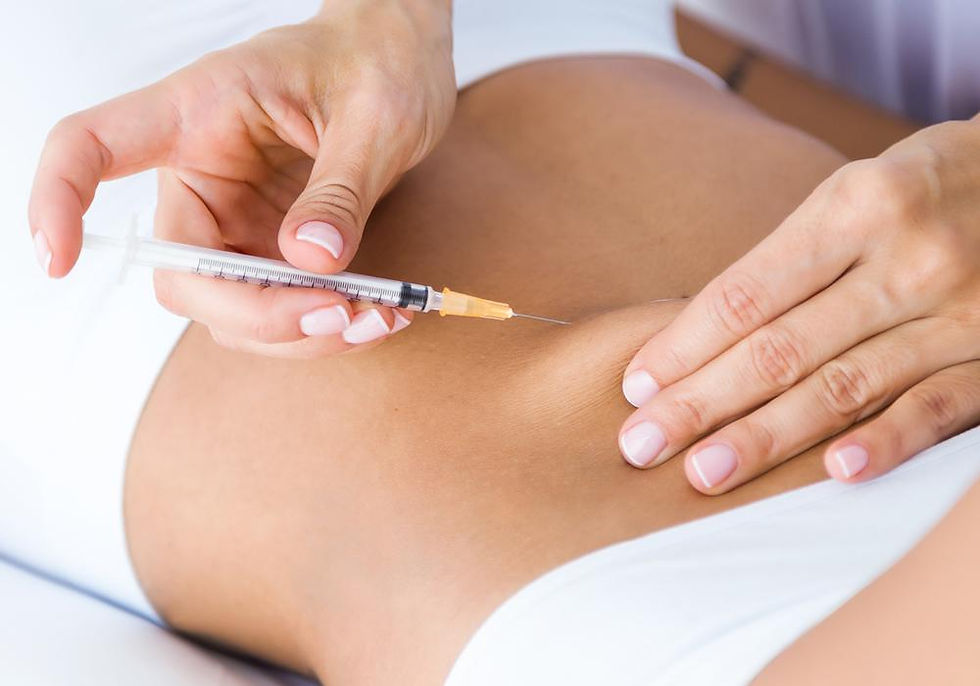The Healing Power of Touch: Why Lymphatic Drainage Massage Should Continue Long After Surgery
- Touched ByKoko
- Jun 8
- 3 min read
As a nurse, a woman, and someone who has experienced the profound journey of post-op recovery both professionally and personally, I can tell you this with love and conviction:
Lymphatic drainage massage is not a luxury. It’s a necessity.

For many women undergoing cosmetic surgery—whether it’s liposuction, BBL, tummy tuck, or other body contouring procedures—the initial excitement is often followed by pain, swelling, and confusion about healing. We’re told to book 5–10 massages in the early weeks—but what happens after? Why do some results plateau, fibrosis set in, or fluid linger months later?
Let me share what I’ve learned, felt, and seen—backed by both science and soul.
Lymphatic Massage: More Than a Spa Service
Lymphatic drainage massage (LDM) is a gentle, rhythmic technique that stimulates the flow of lymph—a fluid that removes waste and toxins from your tissues. After surgery, your lymph system is overwhelmed. The body swells. Seromas form. Fibrosis hardens tissues. And yet, most clinics only advise care for the first 3–4 weeks.
But your body continues healing for 6–12 months.
The International Society of Lymphology confirms that the lymphatic system can take months to fully resume natural function post-trauma or surgery. When this system is blocked or stagnant, recovery slows and complications increase (Chevrel et al., 2020). Regular massage supports this detox pathway—allowing your body to sculpt, soften, and shine over time.
Extending Lymphatic Massage: 6 Months & Beyond
At Touched by Koko, I recommend that my clients:
Commit to 2–4 massages per week in the first month post-op
Continue weekly or biweekly for up to 3 months
Transition to monthly maintenance for at least 6–12 months
Include massage as part of your self-care long term
Why?
Because beauty is not instant—and healing doesn’t stop after your last stitch dissolves. Many women experience delayed swelling, stubborn fibrosis, and emotional overwhelm months after surgery. Regular LDM can reduce scar tissue, smooth textures, maintain your snatched shape, and support emotional release.
In fact, a 2021 study in Aesthetic Surgery Journal found that patients who continued LDM for 3–6 months post-lipo had less induration, better contour definition, and faster return to daily activity (Tessari et al., 2021).
My Clients Say It Best
“I stopped massage after the first month and noticed stiffness and swelling came back. Koko encouraged me to restart—within two sessions, I felt like myself again.”– C.F., London
“It’s not just the massage, it’s the feeling of being looked after. Nurse Koko’s hands healed not only my body, but my mind.”– A.A., Lagos
“Monthly massages are part of my new self-care ritual. My waist stays snatched, my skin stays soft, and I feel aligned.”– M.B., Croydon
A Nurse’s Promise: Care That Continues
In the early days of recovery, you need safety. In the weeks that follow, you need skill. But in the months that stretch ahead—you need consistency.
As a surgical nurse and aesthetics professional, I’ve seen the difference between rushed recoveries and nourished ones. My clients who embrace long-term care walk differently. Glow differently. Heal differently.
That’s why at Touched by Koko, we offer:
Custom recovery packages up to 6 months
Subscription-based massage memberships
Virtual guidance for clients abroad
Integration of scar management and skin hydration treatments
Closing Thoughts: Healing Is Ongoing
If no one has told you this before: You deserve care beyond the clinic. Your body has undergone something big. It deserves touch. Movement. Support. Love.
Let’s redefine post-op recovery as a journey—not a deadline.
With grace and good lymph flow,
Nurse Koko
References
Chevrel, J. P., et al. (2020). Understanding the Role of the Lymphatic System in Plastic Surgery Recovery. Plastic and Reconstructive Surgery Journal.
Tessari, L., et al. (2021). Postoperative Manual Lymphatic Drainage Improves Outcomes in Liposuction Recovery. Aesthetic Surgery Journal, Volume 41, Issue 10.
Foldi, E. (2012). Textbook of Lymphology for Physicians and Therapists. Elsevier Health Sciences.
International Society of Lymphology. (2020). Consensus Document on the Diagnosis and Treatment of Peripheral Lymphedema.



Comentarios